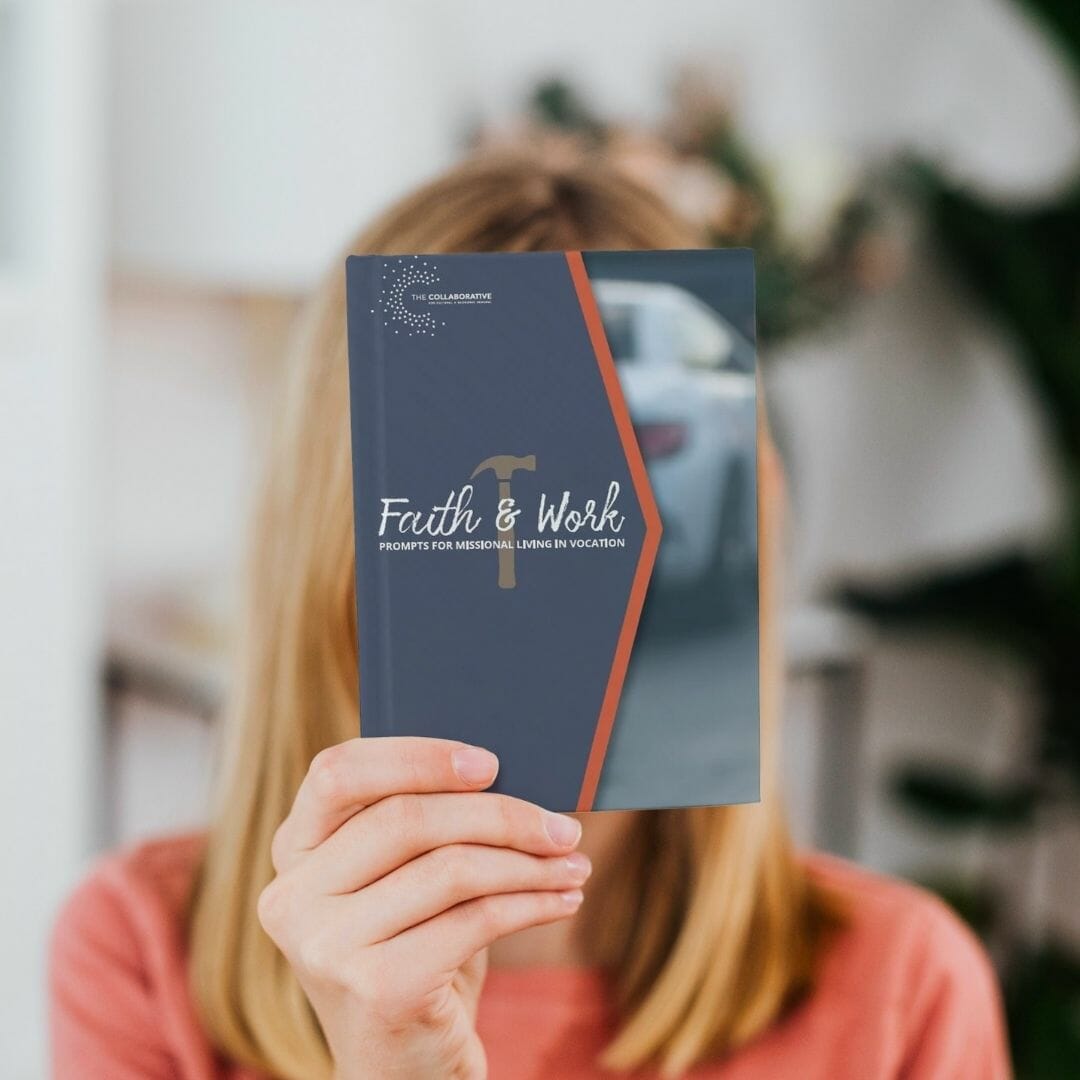“And let us consider how we may spur one another on toward love and good deeds, not giving up meeting together, as some are in the habit of doing, but encouraging one another—and all the more as you see the Day approaching.” –Hebrews 10:24-25
As a creative, I have an endless capacity for relating with others who share my heart language. I love discussion which revolves around creative concepts and ideas – I enjoy wrestling with the topics other creatives share with me. I love hearing their interpretive responses to my struggles, ideas, and concepts. The paradox of being in a creative community for me is I may grow physically weary, but my spirit – what makes me come alive is always refreshed and renewed. Often, an exhausting reality for creatives is continually trying to find their “tribe,” that small enclave of individuals with whom they share a common language and enjoy the safety of sharing freely. When one finds such a rare community it should not be taken for granted.
Throughout history, there have been handfuls of creative enclaves where artistic language, compassion, and consideration for one another was shared in common. By being together in an intentional community, they made significant contributions to humanity that would not have happened had they worked independently. For instance, the household names of; Monet, Degas, Renoir, and Pissarro enjoyed such a community. It would be hard to imagine a world without their artistic contribution and for their inadvertent role in the birth of Impressionism.
These four young artists embraced at least twenty-six other artists who were at various stages of their careers and they were to have a colossal impact on the world of the arts. Two significant ways their community changed the art world were: One, the way art was publicly exhibited and approved of and two, they were the ones who heralded the collapse of the Salon, an academy that was the gatekeeper of the art world in Paris in mid-1800’s – the community which had the final say on what would and wouldn’t be allowed to be exhibited and promoted.
Alone, none of them could have so profoundly shifted the art world. But, because of their community – mere consideration for one another, the art world would never be the same.
Here’s a glimpse into how this community was forged.
In 1862, young Frédéric Bazille was sent to Paris by his parents to attend medical school. However, he failed his medical exam, largely due to disinterest, and at last his father reluctantly agreed to provide him with support so that he could pursue painting full time – art was where his true passion had always been. He soon discovered and became a student of the renowned painter Charles Gleyre. In Gleyre’s studio he met and became fast friends with other students namely: Claude Monet, Auguste Renoir, and the Englishman, Alfred Sisley. Soon the four were inseparable, often sharing sleeping quarters, studio spaces, and when money was tight they modeled for each other. Bazille was provided for very well by his father who was a wealthy wine merchant. That provision often ended up subsidizing his friends by underwriting their rent and grocery bills. Bazille believed in his friend’s talent and instead of requiring them to repay him in cash, he accepted in exchange a growing private collection of their works.
At times, the four men snuck long peaks over the wall into the garden of the master oil painter Eugene Delacroix – afterward comparing notes on his style. As they matured in their skills as painters and gained some small acceptance, they sought to be included in the traditional Salon of Paris. The Salon controlled the upper echelons of the art world at that time. To their dismay, their work was often overlooked and when it was included, it was positioned so high up on the walls that they were hardly noticed, much less appreciated for their technical acumen.
Eight years after the group met in Gleyre’s studio, Bazille, yielded to his patriotic loyalties and enlisted in the Franco-Prussian War, despite his friend’s earnest pleading for him not to go. Two months later the small band of artists-friends lost their de facto leader and principal benefactor when he died on the battlefield. They were devastated and yet their commitment to one another remained.
Four years later, a photographer named Nadar who had begun admiring these talented young artists offered space in his studio to hold an exhibit of their works. This exhibit was the first of its kind bypassing the institutionalized Salon with its formalized methods of inclusion, how art was displayed during a sanctioned exhibit, and their handpicked jury who were tasked with selecting artwork and awarding medals to the best artists. This exhibit would mark the end of an era of how fine art was exhibited in the West by breaking away from the long-lived, institutionalized art world.
Monet, Degas, Pissarro, and the lone female painter Berthe Morisot formed a fellowship they called the Société Anonyme Coopérative des Artistes Peintres, Sculpteurs, Graveurs (The Cooperative and Anonymous Association of Painters, Sculptors, and Engravers). They were now the Young Turks of the Parisienne art scene.
By 1874 the group had grown exponentially and on April 15, 1874, 30 artists exhibited their work as a collective – not as individuals. At that time, they were derisively referred to as the Impressionists by the Academy. However, by the time of their third exhibition they had fully embraced the title, sloughing off its negative connotations and proudly referring to themselves as The Impressionists.
Just think of what would have been lost to Western culture had Bazille, Monet, Renoir, and Sisley taken each other for granted – had they only known each other superficially as fellow art students but nothing more. What if there were no patrons like Bazille’s father who – even if unintentionally – helped these amazingly gifted individuals flourish while they were not yet earning a supporting income? What if their community had disbanded after Bazille’s untimely death? What if they had given up meeting together and supporting one another and given in to the rejection of their work by the art establishment? What if they would have not included a woman in their ranks and broken with social convention? What if they had not been befriended by the photographer, Nadar, and not been given a place to exhibit their work? It would have been a colossal loss in their time and our lives would have been impoverished as well! But they did have a patron, they did stick together after the death of their de facto leader, they did have a place to exhibit work, and they did break with institutionalized and societal conventions. And what happened? They changed the way we see – visual perception itself. They changed the way art is viewed publicly. Did they have the slightest idea of how their commitment to one other would ultimately impact the world? I seriously doubt it. But what is abundantly clear is they had – if nothing else – a verifiable commitment to their creative community – they didn’t take something that was for all intents and purposes nearly impossible to find for granted.
Creative soul – have you found your creative community, that special group or even just one other person who is like-minded and shares similar interests, passions, and heart language? If not ask yourself, “Who is that one person with whom I might intentionally pursue creative community to stir one another to love and good deeds and begin to have some positive influence in our mutual artistic disciplines and who knows in our culture… or one hundred and fifty-eight years into the future?
If you feel you would benefit from being in community with other creative Christians or you are already part of an intentional creative community – I would like to listen to your story and hear your thoughts on what I’ve shared here. Feel free to contact me at: artsinfo@fpco.org please place “Matt @ Creative Community” in the subject line.
Matt Guilford is a part of the leadership team for the Arts Fellowship Orlando at FPCO. He has been a full-time missionary for 27 years. His mission focus is to take the gospel into the world of art, media and entertainment and introduce creatives to their Creator. Matt has been married to his wife, Betsy for 28 years. Betsy is also a full-time missionary chaplain.
Matt and Betsy have served in Indiana, Southern California, and New York City, and have called Orlando home for the past 21 years.


